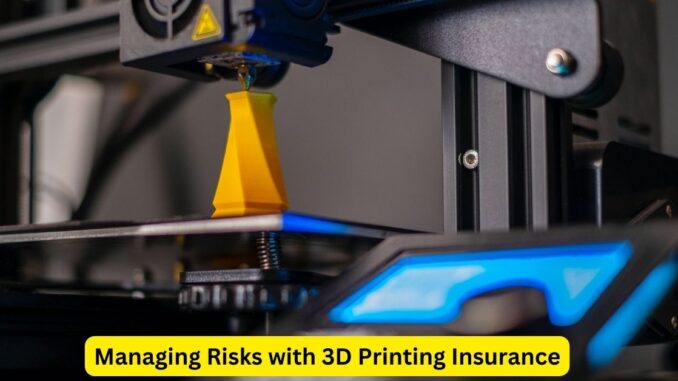
The world of manufacturing is undergoing a seismic shift with the advent of 3D printing technology. This revolutionary innovation enables the creation of intricate designs and functional prototypes with unprecedented ease. However, with great innovation comes the need for careful risk management. Enter 3D printing insurance, a vital tool in navigating the uncharted territory of this emerging technology.
As 3D printing becomes more prevalent across industries, the associated risks evolve and expand. Traditional insurance policies may fall short in adequately addressing the unique challenges posed by this cutting-edge technology. Consequently, specialized insurance tailored for 3D printing is becoming essential.
One of the primary risks in 3D printing is intellectual property infringement. The ease of replicating designs and products raises concerns about unauthorized use of copyrighted materials. 3D printing insurance can offer protection against legal liabilities arising from such infringement, shielding businesses from substantial financial losses and litigation.
Moreover, the intricate nature of 3D printing processes introduces the possibility of errors resulting in defective products. Unlike conventional manufacturing, where errors might be easier to trace, identifying faults in a 3D-printed object demands a nuanced approach. Insurance coverage can mitigate the financial fallout from product recalls or liability claims stemming from defects.
Additionally, as 3D printing expands into medical and aerospace industries, the stakes rise significantly. The implications of a malfunction in a 3D-printed medical implant or a faulty aerospace component are profound. Specialized insurance coverage is indispensable in mitigating the risks associated with such critical applications.
The dynamic nature of technology makes predicting risks a daunting task. However, forward-thinking insurance companies are proactively developing flexible policies that adapt to the evolving landscape of 3D printing. These policies often encompass a spectrum of coverage, addressing various aspects such as cyber liability, supply chain disruptions, and business interruption due to equipment failures.
For businesses venturing into 3D printing or those already entrenched in this domain, understanding the nuances of 3D printing insurance is crucial. Collaborating with insurance providers that specialize in this field can ensure comprehensive coverage tailored to the specific risks inherent in 3D printing processes.
In conclusion, while 3D printing presents a realm of unprecedented possibilities, it also introduces novel risks that require specialized risk management strategies. Investing in 3D printing insurance isn’t merely a precautionary measure; it’s a proactive step toward safeguarding businesses against the uncertainties accompanying this transformative technology. As the landscape continues to evolve, staying abreast of insurance options and embracing tailored coverage will be key in navigating the promising yet intricate world of 3D printing.

Leave a Reply